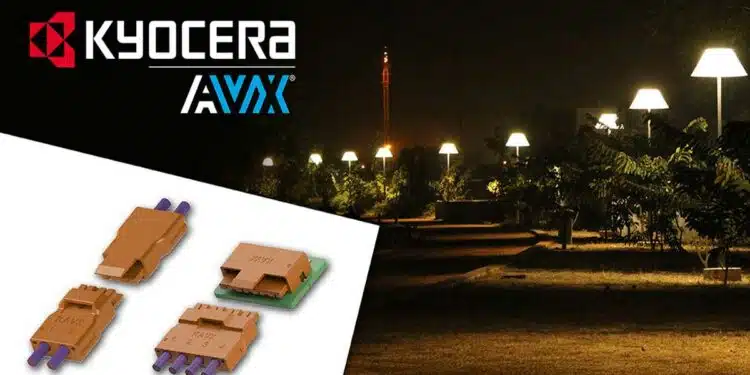KYOCERA AVX, a leading global manufacturer of advanced electronic components engineered to accelerate technological innovation and build a better future, released the new 9288-000 Series hermaphroditic wire-to-wire (WTW) and wire-to-board (WTB) connectors for lighting and industrial applications.
These unique two-piece connectors facilitate WTW termination with two identical mating halves, which simplifies BOMs, and WTB termination with one those halves and an SMT version.
Both halves of the new 9288-000 Series hermaphroditic connectors feature orange or white glass-filled PBT insulators equipped with plastic latches for good mechanical retention and the company’s field-proven poke-home contact technology, which enables quick, easy, and tool-free in-field wire termination.
Simply strip and poke wires to insert and twist and pull to extract. Made of phosphor bronze with lead-free tin-over-nickel plating, these poke-home contacts also establish durable, reliable, high-integrity connections and deliver excellent electrical and mechanical performance.
The new 9288-000 Series hermaphroditic WTW and WTB connectors are currently available with 2–4 contacts on a 5mm pitch, compatible with 16–18AWG solid or stranded wire, and rated for 6A (18AWG) or 7A (16AWG), 600VACRMS or the DC equivalent, 20 mating cycles, three wire replacement cycles, and operating temperatures extending from -40°C to +125°C.
They are also UL approved and RoHS compliant and shipped in tape and reel or bulk packaging.
“The new 9288-000 Series hermaphroditic wire-to-wire and wire-to-board connectors leverage our field-proven poke-home contact technology to enable quick, easy, and tool-free in-field termination and durable phosphor bronze contact materials to deliver excellent electrical and mechanical performance throughout the product lifecycle,” said Perrin Hardee, Product Marketing Manager, KYOCERA AVX. “They also feature a locking mechanism to further improve reliability, and WTW versions simplify BOMs since they’re comprised of two of the same part number.”
For more information about the new 9288-000 Series hermaphroditic WTW and WTB connectors for lighting and industrial applications or the complete portfolio of KYOCERA AVX wire-to-wire connectors, please visit the links embedded here.































